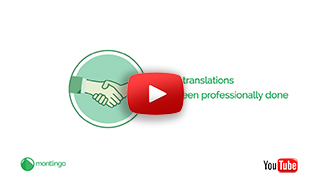Yea, we know. You had something translated and are getting complaints about the quality of the translation. Moreover, you’re not even sure the company is charging you fairly, but you’ve been with them for a while and despite your relationship, it seems their good habits have started to slip.
What to do? Well, you more than likely have weighed the options yourself or collectively with a group of colleagues and have ultimately decided you want to leave or otherwise change providers.
Where do you even begin changing translation companies? Sometimes, it seems like translation companies have you by the *****.
It’s what we here at MontLingo refer to as a Translation Hostage situation. *Calls 911, Send the hostage negotiator*
You want to go to another provider, and you know your current provider has a wealth of legacy translations in what they call a Translation Memory that they’ve built up over time, which is why you seemingly get pretty decent rates with them. And now they don’t seem to want to turn it over to you? All that money down the tube… not so fast.
Here’s what you have to do to change providers and protect the investment you’ve made.
Know that your new provider will be ready to help any way they can. So you can always ask them for advice on what linguistic assets to request.
- Check your cancellation clause with respect to any contract you may have.
- Request your Translation Memory and Terminology Glossary in an industry standard format, like XLIFF
- Have your new provider verify that everything that has been provided is in good working condition, i.e. can be read by their translation system
- Outline all the pain points you experienced, with your previous provider and ensure to set your expectations clearly.
- Set out a Service Agreement outlining the Translation providers responsibilities and costs and your responsibilities to the provider
- Have a kick-off meeting with the new translation provider and make a transition plan
- Notify your old provider by email and telephone and fill them in on the transition date and the expectation until that moment.
- Make the change
Hopefully all of this will have gone smoothly while moving through the steps. Should you need help, MontLingo will happily help you transition from 1 provider to another, even if 1 of those providers in not us.
We believe strongly in helping those outside our industry be serviced right by those within it.



